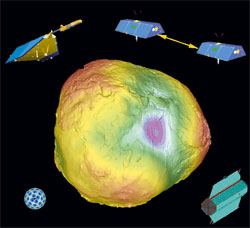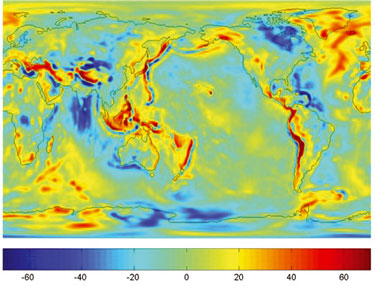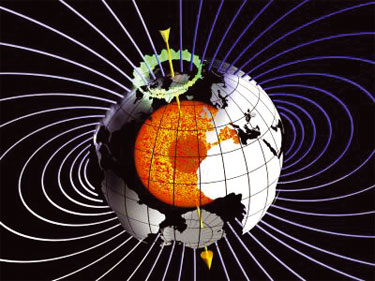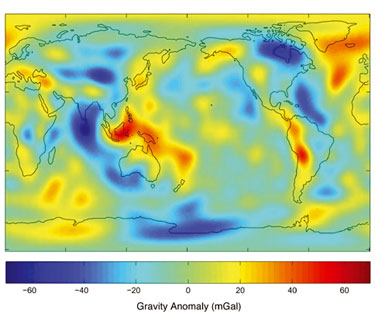Description
This ‘category’ of instruments is used here to describe a variety of sensors and supporting systems used to derive information on either the Earth’s gravity field, magnetic field, or geodynamic activity.
Gravity field measurements from space rely on one of three techniques:
- use of single or multiple accelerometers on one or more satellites to derive gravity or gravity gradient information;
- precise satellite orbit determination (using satellite to ground navigation systems such as GPS and satellite laser ranging systems), and separation of satellite motion induced by the Earth's gravitational force alone, from other forces (such as solar radiation and aerodynamic drag);
- satellite to satellite tracking (eg by GPS or microwave link) to measure relative speed variations of two satellites induced by gravitational force.
Satellite-borne magnetometers provide information on strength and direction of the internal and external Earth’s magnetic field and its time variations.
Applications
Gravity field measurements from space provide the most promising advances for improved measurement of the ‘geoid’ and its time variations. The geoid is the surface of equal gravitational potential at mean sea level, and reflects the irregularities in the Earth's gravity field at the Earth's surface due to the inhomogeneous mass and density distribution in the Earth's interior.
More accurate models of the static mean geoid and its temporal variability are vital for:
- a precise marine geoid, needed for the quantitative determination, in combination with satellite altimetry, of absolute ocean currents and their transport of heat and other properties;
- a unified global height reference system for the study of topographic processes, including the evolution of ice-sheets and land-surface topography;
- new understanding of the physics of the Earth´s interior;
- estimates of the thickness of the polar ice sheets and its variations – through combination of bedrock topography derived from gravity measurements and ice-sheet surface topography from altimetry;
- estimates of the mass/volume redistribution of freshwater in order to further understand the hydrological cycle;
- improved understanding of post-glacial rebound processes on a global scale.
The precision location capabilities of satellite laser ranging and other systems (such as DORIS and GPS), sometimes in combination with interferometric SAR (INSAR), are applied in support of studies of crustal deformation, tectonic movements, and Earth’s spin rate.
 LAGEOS, CHAMP, GRACE, GOCE all provide new insights into Earth's gravity field |
 |
 |
 Prior to GRACE, the long-wavelength part of the Earth's gravity field from space was determined from various tracking measurements of Earth orbiting satellites. Only broad geophysical features of the Earth's structure could be detected. The lower image shows the final detail available after just 1 year of GRACE data. |
| Current & planned instruments Gravity ACC CHAMP gravity package EGG HAIRS Magnetic field ASM CHAMP magnetometry package EFI Fluxgate magnetometer GGAK-E GGAK-M GID-12T IMSC Magnetometer (NOAA) MMP PEM Plasma-Mag RBE SESS SSJ/4 SSJ/5 SSM STR Variant VFM Precision orbit ARGOS CHAMP GPS Sounder DORIS DORIS-NG EGG GOLPE GPS (ESA) GPS receiver GPSDR GRAS INES IST Laser reflectors Laser reflectors (ESA) LRA LRA (LAGEOS) ROSA RRA TRSR |
CHAMP: op.gfz-potsdam.de/champ/index_CHAMP.html |